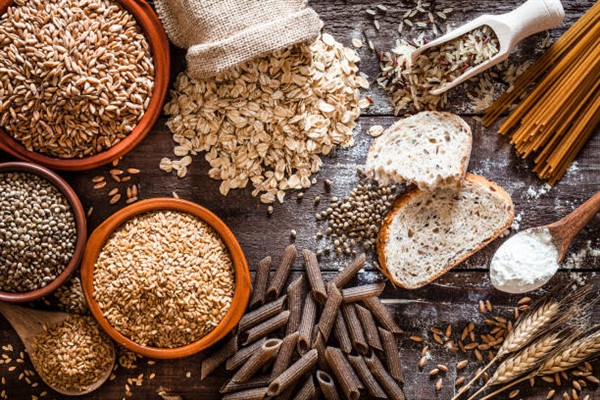Introduction
Breakfast is often hailed as the most important meal of the day, and this sentiment holds true for everyone, but it’s especially crucial for individuals managing diabetes. In this comprehensive guide, we’ll delve into the world of diabetes, the relationship between diet and blood sugar, and, most importantly, discover the best breakfast choices to help diabetics start their day on the right foot.
Understanding Diabetes and Diet
Types of Diabetes
Diabetes is a complex metabolic disorder that affects how our bodies regulate blood sugar (glucose). There are primarily two types of diabetes:
- Type 1 Diabetes: In this autoimmune condition, the pancreas produces little to no insulin. People with Type 1 diabetes require insulin injections or an insulin pump to manage their blood sugar levels.
- Type 2 Diabetes: This is the most common form of diabetes. It occurs when the body doesn’t use insulin properly, resulting in insulin resistance. While Type 2 diabetes is often managed with lifestyle changes and medications, some people may require insulin injections.
Regardless of the type, diet plays a crucial role in managing diabetes effectively.
Dietary Goals for Diabetics
Maintaining balanced blood sugar levels is the primary goal for diabetics. To achieve this, there are several key dietary considerations:
- Balanced Diet: Diabetics should aim for a well-balanced diet, which includes a variety of foods from different food groups.
- Portion Control: Managing portion sizes is vital. Overeating can lead to spikes in blood sugar levels, and under-eating may cause hypoglycemia (low blood sugar).
- Carbohydrate Management: Carbohydrates have the most significant impact on blood sugar levels. Diabetics should monitor their carbohydrate intake and choose complex carbohydrates with a low glycemic index (GI).
The Ideal Diabetic Breakfast
A healthy breakfast for diabetics should include a combination of three essential components:
- Protein: Protein helps stabilize blood sugar levels, keeps you feeling full, and supports muscle health.
- Fiber: Fiber-rich foods are excellent for diabetes management as they slow down the absorption of glucose, preventing sudden spikes.
- Healthy Fats: Incorporating healthy fats, such as those found in avocados, nuts, and seeds, can help keep blood sugar stable.
Top Breakfast Foods for Diabetics

Now that we understand the elements of an ideal diabetic breakfast, let’s explore specific foods that align with these dietary goals:
Whole Grains
- Steel-Cut Oats: A classic choice, steel-cut oats are a slow-release carbohydrate that provides long-lasting energy. Top with fresh berries and a sprinkle of nuts for added fibre and healthy fats.
- Quinoa: A high-protein grain, quinoa is an excellent choice for diabetics. It’s also gluten-free and packed with essential nutrients.
- Whole Wheat Bread or English Muffins: Choose whole wheat options for your toast or breakfast sandwich. They provide more fiber and nutrients than their refined counterparts.
Lean Proteins
- Greek Yogurt: Low in sugar and high in protein, Greek yoghurt makes for an ideal diabetic breakfast base. Add berries and a drizzle of honey for a touch of sweetness.
- Eggs: Eggs are a protein powerhouse and incredibly versatile. Enjoy them scrambled, poached, or in an omelette with plenty of vegetables.
- Cottage Cheese: Rich in protein and low in carbs, cottage cheese can be paired with fruits or used as a base for savoury toppings.
Low-Glycemic Fruits
- Berries: Blueberries, strawberries, and raspberries are low in sugar and high in antioxidants and fiber.
- Apples: An apple with peanut butter or almond butter is a satisfying and healthy choice for diabetics.
- Cherries: Cherries have a low glycemic index and can be a sweet addition to your breakfast.
Healthy Fats
- Avocado: Avocado toast is a trendy and nutritious breakfast choice. Avocado is rich in healthy monounsaturated fats and fiber.
- Nuts and Seeds: Sprinkle chopped nuts or seeds (like chia or flaxseeds) over your yoghurt or oatmeal for added texture and healthy fats.
- Olive Oil: Use olive oil for cooking or drizzle it over your breakfast for a dose of heart-healthy fats.
Sample Diabetic Breakfast Ideas

Now that we’ve highlighted individual foods, let’s put them together into practical breakfast ideas:
Option 1: Greek Yogurt Parfait
- 1 cup of Greek yogurt
- 1/2 cup of mixed berries
- 1 tablespoon of honey (optional)
- 2 tablespoons of chopped nuts (e.g., almonds or walnuts)
Option 2: Vegetable Omelette
- 2 eggs
- Chopped bell peppers, onions, and spinach
- 1 ounce of feta cheese
- Sliced avocado on the side
Option 3: Quinoa Breakfast Bowl
- 1/2 cup of cooked quinoa
- Sliced apples or berries
- A sprinkle of cinnamon
- A dollop of plain Greek yoghurt
These sample breakfast ideas incorporate protein, fiber, and healthy fats, making them ideal for diabetics.
Meal Planning Tips
Effectively planning your meals is crucial for managing diabetes:
- Consult a Dietitian: A registered dietitian can help you create a personalized meal plan tailored to your specific needs.
- Keep a Food Diary: Track your meals, blood sugar levels, and how different foods affect you. This will help you make more informed choices.
- Consider Timing: Eating regular meals and snacks at consistent times can help regulate blood sugar levels.
- Read Food Labels: Be aware of the carbohydrate content and serving sizes of the foods you consume.
- Stay Hydrated: Drink plenty of water throughout the day to help maintain proper hydration.
- Don’t Skip Meals: Skipping meals can lead to irregular blood sugar levels. Eat balanced meals at the right times.
Breakfast on the Go
For those with busy schedules, here are some portable breakfast options:
- Protein Bars: Choose bars specifically designed for diabetics, with controlled carbohydrate content.
- Smoothies: Blend a nutritious smoothie with Greek yoghurt, spinach, berries, and a touch of almond butter.
- Trail Mix: Prepare a homemade trail mix with nuts, seeds, and a small portion of dried fruits.
Dining Out
When dining out for breakfast, here are some tips to make wise food choices:
- Check the Menu: Look for items that include whole grains, lean proteins, and vegetables.
- Ask About Preparation: Don’t hesitate to inquire about food preparation methods and ingredients. Many restaurants are accommodating to special dietary requests.
- Control Portions: Be mindful of portion sizes, and consider sharing dishes if the servings are large.
Importance of Regular Monitoring

Regularly monitoring your blood sugar levels is crucial. It provides valuable information about how your dietary choices are impacting your health.
Work closely with your healthcare provider to develop a monitoring plan that suits your needs.
Conclusion
In conclusion, the best breakfast for diabetics is one that prioritizes a balanced intake of protein, fiber, and healthy fats. By making mindful food choices and planning your meals effectively, you can take control of your diabetes and start your day with a nutritious and satisfying breakfast.
Remember, every individual’s needs are unique, so consulting with a healthcare professional or dietitian is essential for creating a personalized meal plan. By prioritizing your health and making informed choices, you can enjoy delicious and diabetic-friendly breakfasts.
Additional Resources
To continue your journey toward diabetes management and healthy eating, here are some additional resources:
These resources offer valuable information, recipes, and tools to support your diabetes management journey.
This comprehensive blog post covers the best breakfast options for diabetics, offering information on diabetes types, dietary goals, top breakfast foods, sample meal ideas, meal planning tips, and more. It concludes with the importance of regular monitoring and additional resources for further guidance.











